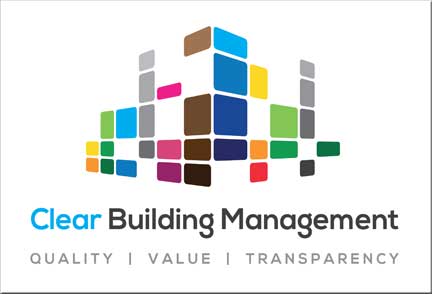
By Harry Scoffin
Last week, the Levelling Up select committee in the House of Commons published a highly critical report into Michael Gove’s January 10 cladding pronouncements and the raft of new policies that followed.
The paper attacked the recent government amendments to the Building Safety Bill that, it claimed, amounted to little more than “a bizarre lucky dip”. We are, however, waiting for further government amendments to the Bill to be published the week of March 21.
The cross-party committee’s chief concerns are non-cladding costs, which LKP knows can often dwarf the bills for cladding removal and replacement, and those leaseholders who have already been forced to pay up substantial sums:
“As they stand, the Government’s proposals create a bizarre lucky dip in which some leaseholders may see their costs capped at £10,000 (£15,000 in London); some, because they have not yet paid for cladding remediation, may pay nothing at all; and others, who have already paid for cladding remediation, will have paid well in excess of the proposed non-cladding cap. Leaseholders who have already paid for remediation and other interim measures to make their homes safe are no more responsible for the crisis than leaseholders who will now be protected in law from such costs.”
The report also censured government for its failure to build comprehensive and robust datasets detailing the scale of the post-Grenfell building safety crisis, a situation it called as “completely unacceptable”.
“It is completely unacceptable that, nearly five years after the Grenfell tragedy, the Government still does not seem to know how many buildings have unsafe cladding or other historic building safety defects,” it concluded.
LKP has consistently argued that high quality data holds the key to ending this crisis in an equitable and cost-effective manner. It has also suggested that waking watch fire warden contracts should be abolished on non-remediated sites due to their ineffectiveness, revealed in the major east London fire at Ballymore’s New Providence Wharf development in May 2021:
Good data also shows us that new build warranty providers are allowing very few claims, which begs the question of whether the current system, dominated by the NHBC that is responsible for warranties on 80% of all new homes, is working for consumer purchasers of property in non-compliant or poorly built blocks of flats.
According to the government’s data release for January, of the 226 private sector residential buildings with Grenfell-style aluminium composite material (ACM) registered with the government, the remediation of just 21 were accepted under a warranty claim. This is less than 10 per cent of known ACM blocks.
Building Safety Programme: monthly data release – January 2022
Skip to main content We use some essential cookies to make this website work. We’d like to set additional cookies to understand how you use GOV.UK, remember your settings and improve government services. We also use cookies set by other sites to help us deliver content from their services.
In 2017, The Guardian reported that NHBC was in the business of giving rebates to some of its housebuilder members and unveiled a leaked NHBC document suggesting that the criteria for the bonus payments totalling millions sometimes included preference for a low or no-claims history:
New homes warranty firm pays millions to leading homebuilders
The organisation that provides warranties for most of the new homes in Britain is paying millions of pounds to the leading housebuilders every year, raising questions about its independence and credibility amid a wave of complaints about the quality of new-build properties.
Last year, Richard Tice, leader of Reform Party, formerly the Brexit Party, called for the nationalisation of NHBC through a new Act of Parliament because “NHBC been almost silent in this scandal and seemingly avoided media scrutiny”.
The Reform Party’s 2021 policy pamphlet on sorting the NHBC and the cladding crisis can be accessed here: https://www.leaseholdknowledge.com/wp-content/uploads/2022/03/The-Right-Solution-to-the-Cladding-Scandal-Reform-Party.pdf
He had claimed that the “NHBC has assets of £1.9bn, yet is denying cladding related claims on multiple occasions.” The former commercial property developer also outlined plans to “launch a new compulsory fit for purpose warranty scheme for all future new UK Housebuilding with a fee per new home of 1% of sale price”.
Among its recommendations, the Levelling Up committee’s report, “Building Safety: Remediation and Funding”, published last Friday, called on government to:
- … within two months, publish all data it holds on scale of problem including blocks of all heights with any known historic defects, both cladding and non-cladding, including data gathered from third parties such as developers and other sector players
- … scrap policy of £10,000 and £15,000 caps on leaseholder bills for non-cladding remedial works
- … end means testing of state financial assistance based on arbitrary residence test and buy-to-let leaseholders only having one other rental property
- … bring into the schemes leaseholders in affected sub-11m blocks
- … pursue other sector players, such as manufacturers, product supplies and installers, more aggressively as part of its new costs recovery mission
- … find practical ways of recouping money from non-domiciled or “foreign” property developers
- … raise further funds by targeting insurance industry which has profited from the building safety crisis through higher premiums despite blocks having become “safer as a result of remediation”
- … protect social housing residents and the building of new affordable homes from any fallout
- … ensure that PAS 9980 does not become another EWS1 debacle by bringing forward a state-backed Professional Indemnity scheme for those carrying out the assessment
LKP strongly agrees with the committee’s basic analysis of the principle of imposing caps on non-cladding remediation leaseholder costs.
Although the proposed government caps on how much any single leaseholder would be expected to pay towards fixing any fire safety defects, such as timber balconies, missing fire breaks or complementation, have been billed as consistent with the spirit of Florrie’s Law, a policy brought in by then housing secretary Eric Pickles during the Conservative-Liberal Democrat coalition era to tackle perceived major works overcharging in the social sector, Florrie’s Law came from a wildly different starting position.
In contrast to government’s latest approach to the cladding and building safety crisis, where forced loans have been dropped and leaseholders cast as innocent consumers and “hardworking families” exploited by an irresponsible property industry whose players “could be blocked from housing market” and “sued and subject to fines” if collective responsibility is not taken for years of shoddy builds and fire safety neglect, Florrie’s Law caps were originally announced in terms of ending the charging of “excessive” amounts for legitimate council house “repairs”.
Florrie’s law: new cap for council house repairs comes into force
Local Government Secretary Eric Pickles vowed to introduce the cap after a 93-year-old constituent was landed with a £50,000 bill by her local authority for roof repairs. Newham Council based its fee on a guess because it had not conducted a proper survey on the first-floor flat.
It is also worth pointing out that LKP is unaware of a single occasion when Florrie’s Law has capped major works costs, as it only applied to council housing refurbishment involving central government funding.
LKP has concerns that the easiest way for freehold owners and their agents to get around the caps would be to send every leaseholder a bill for the maximum level of the cap and then refuse to explain the calculations behind it.
There will inevitably be attempts by the sector to exploit whatever language is put into the statutory instruments defining what costs count toward the caps and what don’t, which is why thoroughgoing leasehold reform to put service charges under democratic resident control must follow in a second leasehold reform bill in the Queen’s Speech.
The post-Grenfell works government are currently confronting in leasehold are neither “repairs” nor the type of works that should be seen as a basic and necessary part of flat living, and instead derive from years of governmental regulatory failure and a race to the bottom in standards in the property development and construction sectors.
Government to protect leaseholders with new laws to make industry pay for building safety
Developers and product manufacturers that do not help fix the cladding scandal could be blocked from housing market Government puts its guarantee that no leaseholder living in medium or high-rise buildings will have to pay a penny for the removal of cladding into law New powers will allow cladding companies
Should bill caps remain as government policy for non-cladding remediation, LKP proposes that they are brought down to more sensible levels to reflect that such costs are widely recognised as not legitimate for leaseholders to shoulder and therefore make proposed numbers per household such as £50,000 even more shocking.
Notable omissions in the select committee report include any analysis of government’s proposed means testing of financial support for those leaseholders who happen to live in properties above £1 million and the failure of the proposed policies to protect those leaseholders with a freehold share.
If government believes that leaseholders are innocent and should not pay for other’s mistakes, then the injustice of being in a flat blighted by cladding and other defects does not lessen due to the original purchase price, especially in areas of the country with high housing demand such as London where capital values are generally high.
The position of those leaseholders who are also freeholders of their developments has largely been overlooked in the debate, although in February, Lord Young of Cookham, formerly Sir George Young, the man who brought into law collective enfranchisement in the 1990s to allow flat leaseholders the right to compulsorily purchase their freeholds without having to prove fault against the landlord, said:
“There are a number of other problems with the Government’s approach. I start with putting freeholders in the firing line. Where the developer is the freeholder, that is wholly understandable, but resident-owned buildings are excluded from the Government’s proposed protection by Amendment 63. That is because leaseholders in those buildings are also the freeholders—they have enfranchised. It is then up to the residents to sort out their claims against those responsible. When there is no one to claim against, this may mean that those residents must finance all the non-cladding remediation costs themselves. This is plainly wrong. Many leaseholders have used legislation—which, I confess, I put on the statute book—encouraging them to enfranchise and buy the freeholds. This is a welcome step away from the feudal system of leasehold, which the Government have pledged to abolish, and towards commonhold. However, those leaseholders who have enfranchised are every bit as innocent as those who have not, yet they are excluded from the support in the government amendments.”
The Levelling Up committee’s report can be read in full here: https://committees.parliament.uk/publications/9244/documents/159998/default/





 Israel Moskovitz fails to get £30 each from leaseholders for his ground rent demands (as barrister Rebecca Cattermole, acting pro bono, sees off Justin Bates in the Upper Tribunal)
Israel Moskovitz fails to get £30 each from leaseholders for his ground rent demands (as barrister Rebecca Cattermole, acting pro bono, sees off Justin Bates in the Upper Tribunal)





















